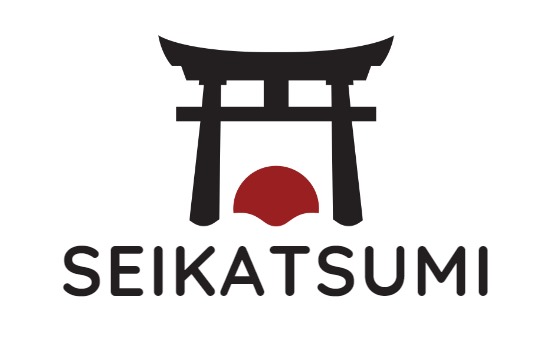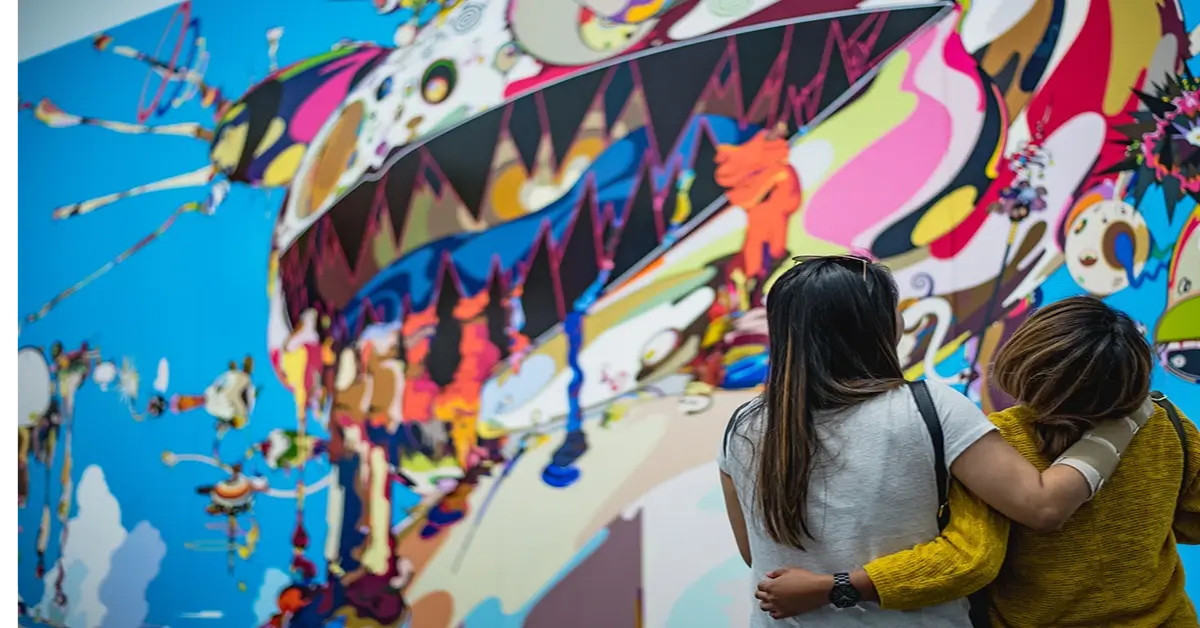Modern Art Japan is a fascinating and diverse topic that has been gaining attention in recent years. From the avant-garde works of Yayoi Kusama to the haunting installations of Chiharu Shiota, Japanese contemporary art is a reflection of the country’s rich cultural heritage and its dynamic modern society. In this article, we will explore the world of modern art Japan and discover some of the most influential artists and artworks of the 21st century!
Embark on a journey through the captivating realm of modern art in Japan, where rich traditions meet contemporary innovation. From the exquisite allure of traditional Japanese painting to the vibrant ukiyo-e prints, this art has left an indelible mark worldwide. As we delve into the historical roots and current movements, discover how a new generation of Japanese artists is reshaping the boundaries of contemporary art, offering unique perspectives on societal issues. Whether you’re a seasoned admirer or a newcomer, join us in gaining a profound understanding and appreciation for this dynamic and fascinating art form.
Inception of Modern Art Japan
At the turn of the 20th century, Japan was undergoing a period of rapid modernization, and this was reflected in the art world as well. The Meiji period (1868-1912) saw the opening of Japan to the West, and with it came new ideas, technologies, and artistic styles. Western-style oil painting, for example, was introduced to Japan in the late 19th century, and Japanese artists began to incorporate elements of this style into their own work.
One of the most influential figures in the early development of modern art Japan was Okakura Tenshin. Okakura was a scholar, art critic, and curator who played a key role in the establishment of the Tokyo School of Fine Arts (now Tokyo University of the Arts) in 1887. He was also a proponent of the Nihonga style of painting, which emphasized traditional Japanese techniques and materials.
Another important figure in the early years of modern art Japan was Kuroda Seiki. Kuroda was a painter who studied in France in the late 19th century and was heavily influenced by Impressionism. He returned to Japan in 1893 and began to incorporate elements of this style into his own work, which helped to popularize the Western-style of painting in Japan.
In the years that followed, modern art Japan continued to evolve and develop. The 1920s and 1930s saw the emergence of the Sosaku-hanga (Creative Print) movement, which emphasized the artist’s individual expression and technique. The 1950s and 1960s saw the rise of Gutai, a group of artists who sought to break down the boundaries between art and everyday life.
Today, modern art Japan continues to thrive, with artists working in a wide range of mediums and styles. From the colorful and playful works of Takashi Murakami to the minimalist sculptures of Tatsuo Miyajima, modern art Japan is a vibrant and diverse field that continues to push boundaries and challenge expectations.
Historical Context of Modern Art in Japan
Modern art Japan is a unique blend of traditional Japanese art forms and Western art styles. It emerged during the Meiji Restoration in 1868 when Japan opened up to the world and started embracing Western culture. The Meiji period saw the introduction of Western-style painting, sculpture, and architecture, which eventually led to the birth of modern art Japan.
During the early 20th century, Japanese artists began experimenting with different art forms and techniques, creating a range of new styles that reflected their unique cultural heritage. One of the most significant movements was the Nihonga movement, which sought to combine traditional Japanese painting techniques with Western-style painting.
The Nihonga movement was led by artists such as Yokoyama Taikan and Fujita Tsuguharu, who were influenced by the teachings of Okakura Tenshin, a prominent art critic and curator. They sought to create a new style of painting that was both modern and distinctly Japanese, drawing on traditional Japanese themes and motifs.
Another important movement of the modern art Japan was the Sōsaku-hanga movement, which focused on the creation of art prints using traditional Japanese woodblock printing techniques. This movement was led by artists such as Munakata Shikō and Kōshirō Onchi, who believed that artists should be involved in every step of the printmaking process, from design to carving and printing.
Modern art Japan continued to evolve throughout the 20th century, with artists such as Takashi Murakami and Yoshitomo Nara gaining international recognition for their unique styles and contributions to contemporary art. Today, Japan remains a hub for contemporary art, with a thriving art scene that continues to draw inspiration from both traditional Japanese art forms and Western art styles.
Modern Painting in Japan

Japan has a rich history of art and has made significant contributions to the world of modern art. Modern painting in Japan can be divided into two major categories: Nihonga (Japanese-style painting) and Yōga (Western-style painting).
Nihonga (Japanese-style painting)

Nihonga is a traditional form of Japanese painting that emerged during the Meiji period (1868-1912) as a response to the introduction of Western art. It is characterized by the use of natural pigments and traditional Japanese materials, such as washi (Japanese paper), silk, and gold leaf. Nihonga artists often depict traditional Japanese subjects, such as landscapes, animals, and flowers, but also explore more contemporary themes.
Some of the most famous Nihonga artists include Taikan Yokoyama, who is known for his bold and expressive landscapes, and Shunsō Hishida, who is known for his delicate depictions of flowers and birds. The Sato Sakura Gallery is a great place to see modern Nihonga paintings.
Yōga (Western-style painting)

Yōga is a form of Western-style painting that was introduced to Japan during the Meiji period. It is characterized by the use of oil paints and canvas, and often depicts Western-style subjects, such as portraits, still lifes, and landscapes. Yōga artists are known for their experimentation with color, light, and form.
Some of the most famous Yōga artists include Ryūsei Kishida, who is known for his colorful and abstract landscapes, and Fujita Tsuguharu, who is known for his portraits and nudes. The National Museum of Modern Art in Tokyo is a great place to see modern Yōga paintings.
Prominent Modern Japanese Artists
When it comes to modern art Japan, there are several artists that have made a significant impact on the art world. In this section, we will take a closer look at three of the most prominent modern Japanese artists: Yayoi Kusama, Takashi Murakami, and Yoshitomo Nara.
Yayoi Kusama

Yayoi Kusama is a contemporary artist who has gained international recognition for her avant-garde work. She is known for her use of bold colors, polka dots, and repetitive patterns. Kusama’s work spans across various mediums, including painting, sculpture, and performance art. One of her most famous works is the “Infinity Mirror Room,” which features mirrored walls and a series of hanging lights that create an illusion of infinite space.
Takashi Murakami

Takashi Murakami is a contemporary artist who is known for his colorful and cartoonish style. He has been described as the “Warhol of Japan” and has gained international recognition for his work. Murakami’s art often features anime-inspired characters, such as his iconic character Mr. DOB. He is also known for his collaborations with popular brands, such as Louis Vuitton and Kanye West.
Yoshitomo Nara

Yoshitomo Nara is a contemporary artist who is known for his playful and childlike art. His work often features young children and animals, which he portrays in a way that is both innocent and menacing. Nara’s work has been exhibited in galleries and museums around the world, and he has gained a large following of fans who are drawn to his unique style.
These three artists represent some of the most prominent voices in modern Japanese art. Their work has had a significant impact on the art world, and they continue to inspire and influence artists around the world.
Notable Modern Art Movements in Japan

As we explore the rich history of modern art Japan, it’s impossible to ignore the impact of the country’s art movements. From the Gutai Art Movement to the Superflat Movement, these artistic movements have shaped the landscape of contemporary modern art Japan and beyond.
Gutai Art Movement

The Gutai Art Movement emerged in Japan in the 1950s and was characterized by a focus on the materiality of art. The artists associated with this movement sought to break down the boundaries between art and life, exploring new forms of expression and experimentation. They emphasized the physicality of art, using materials such as paint, paper, and fabric to create works that were both visually stunning and conceptually complex.
One of the most notable artists associated with the Gutai Art Movement was Kazuo Shiraga, who created abstract paintings using his feet. His works were a testament to the movement’s emphasis on physicality and experimentation, as well as its rejection of traditional artistic techniques.
Superflat Movement

The Superflat Movement emerged in Japan in the 1990s and was characterized by a focus on contemporary Japanese popular culture. The artists associated with this movement drew inspiration from anime, manga, and other forms of popular media, creating works that were colorful, playful, and often satirical.
One of the most notable artists associated with the Superflat Movement is Takashi Murakami, who has become an international sensation for his vibrant, larger-than-life works. Murakami’s works often feature cartoonish characters and bright colors, drawing on the aesthetics of anime and manga to create a unique style that is both playful and thought-provoking.
Modern Art in Architecture
When it comes to modern art Japan, architecture plays a significant role in showcasing the country’s innovative and creative spirit. In this section, we will explore two sub-sections that highlight the fusion of art and architecture and a famous landmark that has become a symbol of modern Japanese architecture.
Fusion of Art and Architecture
Japan is known for its unique approach to architecture, which often incorporates elements of art and design. This fusion can be seen in many of the country’s modern buildings, which feature stunning facades and intricate details that reflect the creativity and skill of the architects and designers who created them.
One example of this fusion is the Louis Vuitton store in Ginza, Tokyo. Designed by Jun Aoki and Peter Marino, the building features a striking glass facade that resembles a series of ice cubes. The design is both functional and beautiful, as it allows natural light to flood the interior while providing a unique visual experience for passersby.
Another example is the Tokyu Plaza in Omotesando Harajuku, which was designed by Hiroshi Nakamura & NAP. The building features a facade made up of over 20,000 aluminum panels that shimmer and reflect the surrounding environment. The design is a testament to the architect’s ability to blend art and functionality seamlessly.
Tokyo Skytree

The Tokyo Skytree is a towering landmark that has become a symbol of modern Japanese architecture. Standing at a height of 634 meters, it is the tallest tower in the world and the second tallest structure after the Burj Khalifa in Dubai.
Designed by Nikken Sekkei, the Tokyo Skytree features a sleek and modern design that incorporates elements of traditional Japanese architecture. The tower’s unique shape is inspired by the traditional Japanese pagoda, while the interior features a modern and futuristic design that showcases the latest in engineering and technology.
Visitors to the Tokyo Skytree can enjoy stunning views of the city from the observation decks, which are located at heights of 350 and 450 meters. The tower is also home to a variety of shops, restaurants, and entertainment facilities, making it a must-visit destination for anyone interested in modern art and architecture in Japan.
Modern Art Exhibitions in Japan

If you’re interested in modern art, Japan is the perfect destination for you. Japan has a rich history of modern art, and there are many exhibitions that showcase the best of what the country has to offer. In this section, we will discuss some of the most popular modern art exhibitions in Japan.
The National Museum of Modern Art in Tokyo is a must-visit for anyone interested in modern art. The museum has over 13,000 works of modern and contemporary art, including 18 national important cultural properties by artists such as Yokoyama Taikan and Kishida Ryusei. The museum exhibits about 200 works at a time based on appropriate themes and perspectives.
Another popular modern art exhibition in Japan is the National Museum of Modern Art in Kyoto. The museum places particular emphasis on artists or artistic movements in Kyoto and the Kansai area (the western region of Japan), such as Japanese-style paintings of the Kyoto School. The museum also covers the mainstreams of Japanese modern art and craft movements as well as works from all over the world covering every genre of the crafts.
For those who want to experience contemporary artwork, the Seto Inland Sea is currently the hotbed for travelers to experience contemporary artwork. The Setouchi Triennale, held every three years, is an international art festival that takes place on the islands of the Seto Inland Sea. The festival showcases a wide range of contemporary art, including installations, performances, and exhibitions.
In Tokyo, there are many galleries that exhibit modern art. The Mori Art Museum is one of the most popular galleries in the city and showcases contemporary art from around the world. The gallery has a permanent collection of over 400 works of art, including paintings, sculptures, and installations.
Our Opinion on Modern Art of Japan
Modern art in Japan brilliantly balances tradition and innovation, reflecting the nation’s rich cultural heritage while pushing the boundaries of artistic expression.
Emphasizing “ma” or “negative space,” artists like Yayoi Kusama create minimalist works that achieve harmony through emptiness. Drawing inspiration from nature, including landscapes and flora, artists like Takashi Murakami infuse vibrant elements into their pieces.
Experimentation with materials, from traditional paper to cutting-edge technology, defines this field. In essence, modern art in Japan captivates with its dynamic fusion of tradition, innovation, and a deep connection to nature, making it a compelling subject for contemporary art enthusiasts.
You see, modern art Japan is a diverse and vibrant field, encompassing a wide range of styles and techniques. From traditional forms to contemporary experimentation, Japanese artists continue to push the boundaries of what art can be. What’s your opinion on the modern art Japan? Let us know in the comments!
Frequently Asked Questions
How has art in Japan changed over the years?
Art in Japan has gone through significant changes over the years. Japan has a rich history in traditional art forms such as calligraphy, painting, and sculpture. However, with the influx of Western culture, Japanese artists began to adopt new techniques and styles, leading to the emergence of modern art Japan.
One of the most significant changes in Japanese art was the shift towards abstraction and non-representational art. This shift was influenced by the Western art movement, which emphasized the use of color, form, and texture over traditional representational techniques. Japanese artists also began to incorporate new materials into their artwork, such as plastics and other synthetic materials.
Who are the 5 most famous artists in Japan?
Japan has produced many famous artists over the years, each with their own unique style and approach to art. Here are five of the most famous Japanese artists:
1. Yayoi Kusama – Known for her use of polka dots and bright colors, Kusama is one of Japan’s most famous contemporary artists.
2. Takashi Murakami – Murakami is known for his colorful and playful artwork, which often incorporates elements of Japanese pop culture.
3. Hokusai – Hokusai is a famous Japanese artist from the Edo period, known for his woodblock prints and landscapes.
4. Yoshitomo Nara – Nara is known for his cute and whimsical artwork, often featuring children and animals.
5. Kazuo Shiraga – Shiraga was a prominent member of the Gutai movement, known for his abstract paintings created using his feet.
What types of art are there in Japan in particular?
Japan has a rich history of traditional art forms, such as calligraphy, painting, and sculpture. In addition to these traditional forms, modern art Japan encompasses a wide range of styles and techniques, including:
1. Manga and anime: Japanese comics and animation are known for their unique style and have become popular around the world.
2. Performance art: Japanese performance art often involves avant-garde techniques, such as butoh dance and body art.
3. Installation art: Japanese artists often use found objects and other materials to create immersive and thought-provoking installations.
4. Street art: Graffiti and street art have become increasingly popular in Japan, with many artists using public spaces to express their creativity.
If you liked this blog post about Modern Art Japan, don’t forget to leave us a comment down below! Tell us what particularly fascinates you about japanese art and who your favorite artist is!



whoah this blog is wonderful i like reading your articles. Keep up the good work! You realize, many people are looking around for this info, you could aid them greatly.